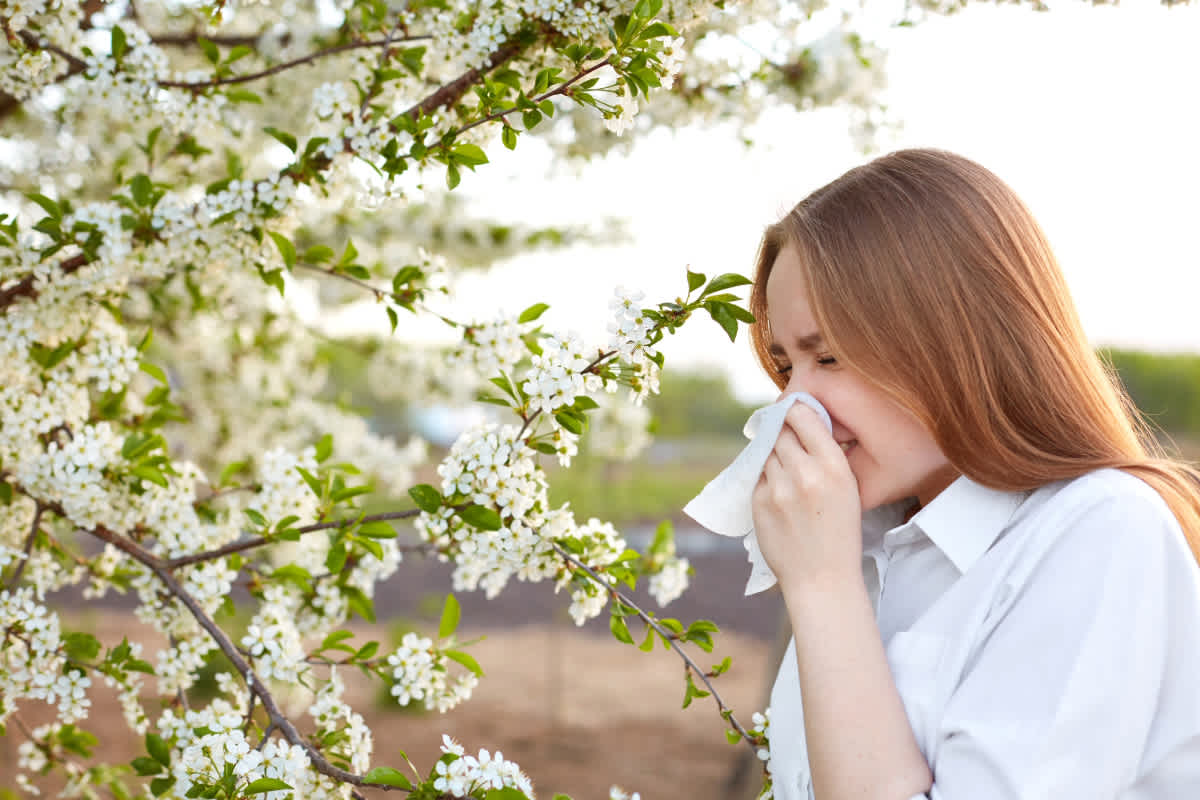Your guide to hay fever symptoms and treatment
Hay fever in New Zealand: Symptoms, treatment and relief
Itchy eyes, constant sneezing, and that never-ending sniffle. Sound familiar? If you’re finding yourself battling these annoying symptoms at certain times of the year, whether it’s spring blooms, summer grass, autumn leaves, or even winter pollen, you’re probably dealing with hay fever.
It’s a common problem for many Kiwis, with about 1 in 5 New Zealanders having hay fever. But the good news is there are treatments and simple ways to ease the discomfort. In this guide, we’ll help you understand what hay fever is, when it strikes, and how you can get relief to enjoy the seasons without the sniffles.
What is hay fever?
Hay fever, also called allergic rhinitis, is caused by an allergic reaction to a harmless substance in the environment around you that your body identifies as harmful. This could be house dust, pollen from grasses, weeds or trees, or animal hair and can cause cold-like symptoms such as a runny nose, itchy eyes, congestion, sneezing or sinus pressure.
In New Zealand, hay fever often flares up in spring and early summer when tree, grass, and weed pollens are at their peak. But symptoms can persist year-round for some people, depending on their triggers.
Far from just being an inconvenience, hay fever can disrupt your daily life, affecting your concentration at work or school, disturbing your sleep, and even making other conditions like asthma worse.
But you don’t have to put up with the discomfort. You can learn to avoid triggers and find the right treatment, keeping symptoms under control.
Common symptoms
Whether you’re armed with a box of tissues or reaching for the antihistamines, hay fever symptoms can vary from person to person and can sneak up slowly or hit all at once.
Hay fever symptoms can include:
- Runny nose and nasal stuffiness, called congestion
- Watery, itchy, red eyes
- Sneezing
- Cough
- Itchy nose, roof of mouth or throat
- Mucus that runs down the back of the throat, called postnasal drip
- Swollen, bruised-appearing skin under the eyes, known as allergic shiners
- Extreme tiredness and fatigue, often due to poor sleep
For some, these symptoms are mild and short-lived. For others, they can be more severe and last for weeks - enough to interfere with daily activities.
When is hay fever season?
Symptoms can pop up year-round, or get worse during certain seasons. That’s when it’s known as seasonal allergies.
Hay fever triggers include:
- Tree pollen, which is common in early spring
- Grass pollen, which is common in late spring and summer
- Dust mites and cockroach droppings, which are present year-round
- Dander from pets, which can be bothersome year-round but might cause worse symptoms in winter, when houses are closed up
- Spores from indoor and outdoor fungi and moulds, which can be both seasonal and year-round
You’re more likely to experience hay fever if you have a family history of allergies, asthma, or eczema, or if you already have asthma or other allergic conditions. Environmental factors, like exposure to dust mites or pollution which are common in many parts of New Zealand, can also increase your risk.
Hay fever treatment options
Medicines to treat and help prevent hay fever are available both over the counter and by prescription at your pharmacy.
Some common hay fever treatments include:
- Antihistamines - tablets, or antihistamine nasal sprays
- Corticosteroid nasal sprays
- Decongestants (for short-term use)
- Medicated or non-medicated eye drops
You may need a combination of these treatments to keep your symptoms under control.
You can also try a saline nasal spray or rinse if you have a blocked nose.
If you have severe symptoms, or if your symptoms aren't getting better with the medicines listed above, you may be prescribed a short course of oral corticosteroids.
How to avoid hay fever
While treatments can significantly ease your symptoms, it’s still important to avoid allergens whenever possible.
The best way to do this is by avoiding the allergens that trigger your symptoms. While it’s not always possible to avoid them completely, there are plenty of simple ways to reduce your exposure and keep symptoms under control.
-
Pollens: Try to stay indoors on high pollen days, especially when it’s windy or after storms. Keep windows and doors closed, avoid drying clothes outside, and don’t keep fresh flowers inside. When outside, wearing wrap-around glasses, a hat, or a mask can protect your eyes and nose. After being outdoors, rinse your eyes or shower to wash away pollen. Using a pollen filter in your car can also help.
-
Pets and dust: If you have pets, keep them out of your bedroom and wash them regularly to reduce pet dander. For dust mites, keep your home dry and well ventilated. Wash bedding weekly in hot water and use dust mite covers on mattresses and pillows. Vacuum regularly with a HEPA air filter if possible.
-
Mould: Remove visible mould, increase ventilation in damp areas, and avoid indoor plants that encourage mould growth.
Hay fever can be frustrating, but with the right knowledge and treatment, you don’t have to let it control your life. By understanding your triggers, reducing your exposure, and using effective treatments to manage symptoms, you can enjoy the outdoors all year round.
Want to know more?
